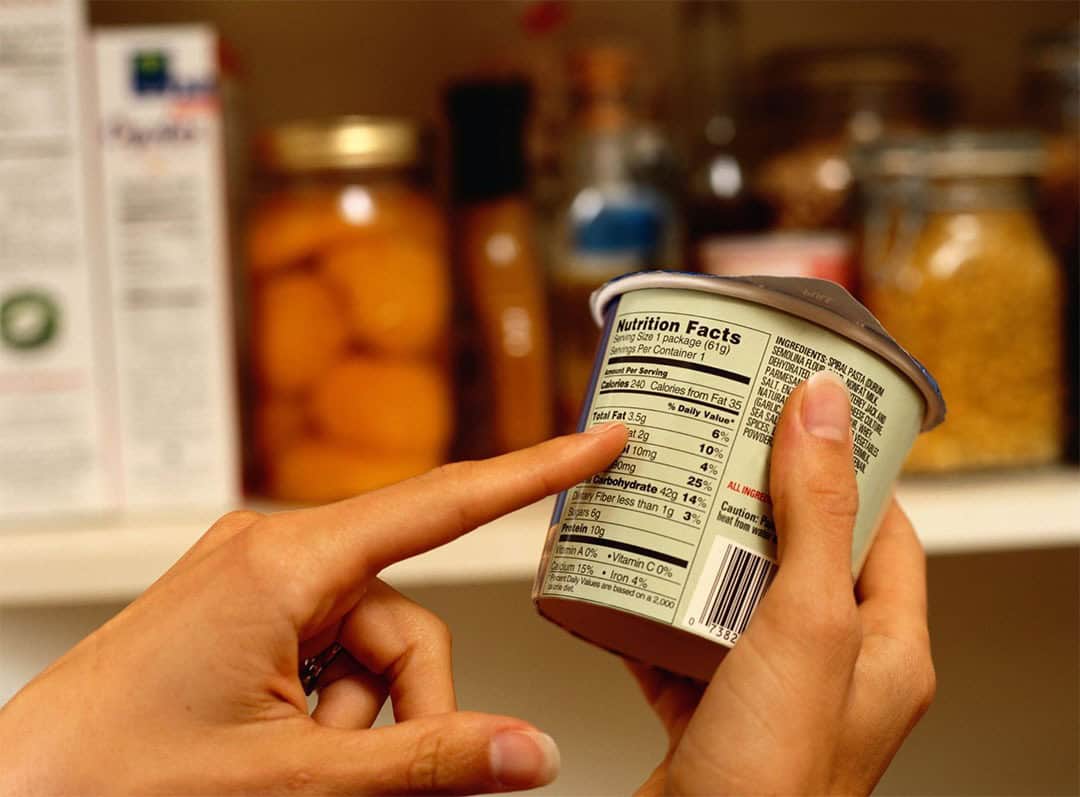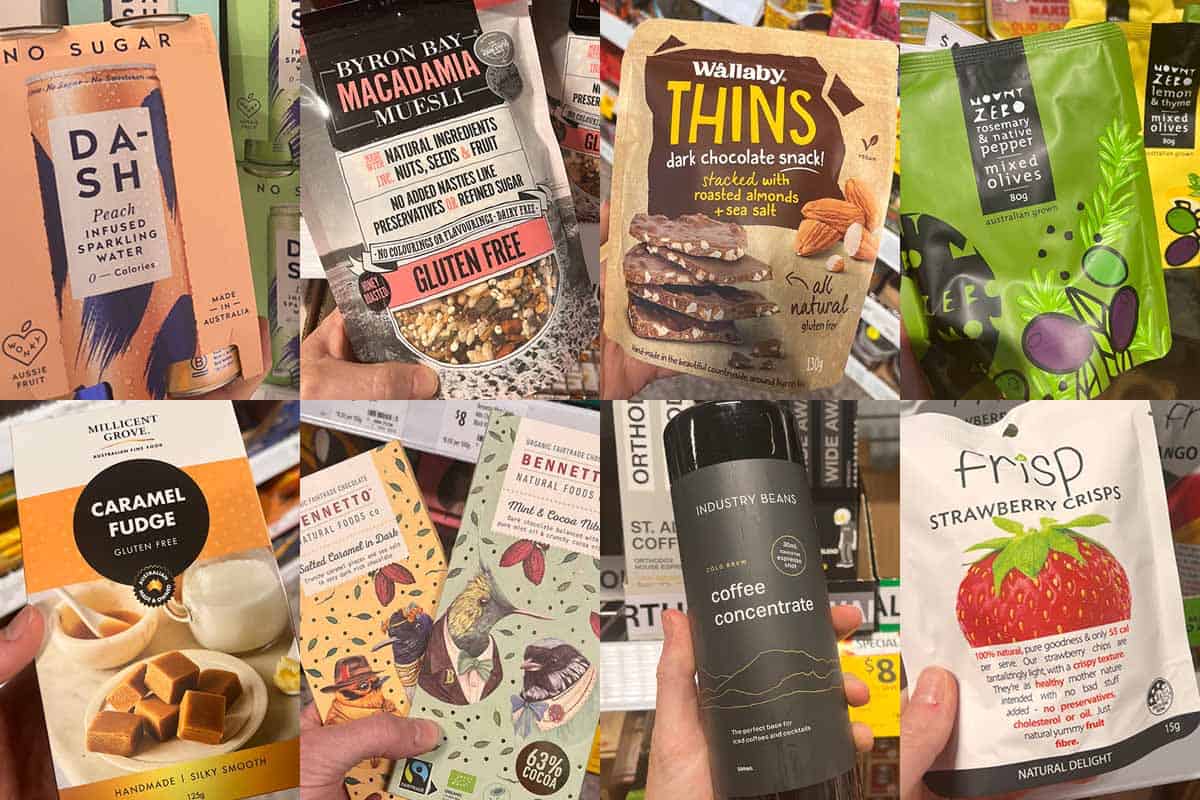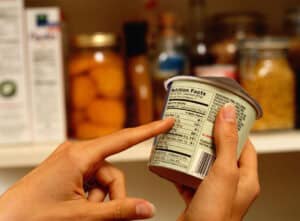Generally, not a day goes by where those of us on a gluten free diet don’t have to look at an ingredients label……so when there are changes, we notice them!
Recently we’ve observed a few more changes than normal. That’s because, as of 25 February 2024, food manufacturers were required to meet new Plain English Allergen Labelling requirements (PEAL) as part of the Food Standards Code. These requirements dictate how certain foods known to cause allergic reactions, immune reactions, and other adverse health reactions are declared.

These changes aim to ensure food allergen information is clearer and easier to find on food labels, which is great news for those of use trying to decipher if there is gluten hiding amongst a long list of ingredients.
But working out if something is gluten free still has it complications, so we enlisted the help of Accredited Practicing Dietitian, Dr Kim Faulkner-Hogg to help map out the new requirements and what to now look out for when deciphering if a food product is gluten free or not.
Understanding Gluten Free, Contains and May Contains Statements on Labels
There are multiple places on a food product label where the presence, possible presence, or confirmed absence, of gluten can be declared.
- The Ingredient Statement: Regulated by PEAL. The list of all the ingredients used and the presence of gluten derived grain ingredients must be declared.
- The Contains Statement: Regulated by PEAL. Any allergens used as ingredients and the presence of gluten now must be declared.
- The May Contain Statement: Not regulated by PEAL. Manufacturers can choose to indicate the possible unintended cross contact of the product with gluten containing grains.
- A Gluten Free Claim or trademark: Determined by the Food Standards Code.
What is Considered “Gluten Containing”?
Food Standards Australia New Zealand (FSANZ) defines wheat, rye, barley and oats to be gluten containing grains. Because of this, even specially produced oats that reduce cross contact with wheat, rye and barley grains, will NOT be found in a food labelled gluten free in Australia and New Zealand.
1. Ingredients Statement
This is where all the ingredients used in the product are listed.
For grains, PEAL requires:
- It is mandatory for the Plain English words Wheat, Barley, Rye, and Oats to be declared in the ingredient list when ingredients from those grains are present. To stand out, the name of the gluten grain needs to be shown in bold text.
Examples: Wheat flour, Barley, Rye flour or rolled Oats.
If a lesser-known grain that is a type of wheat, barley, rye or oats is used, the manufacturer must also include the Plain English name, bolded, in brackets along with it so you clearly know that it is one of the four gluten containing grains. For example:
- Spelt is a type of wheat, so you will see this — Spelt (Wheat).
- Triticale is a hybrid of wheat and rye, so you will see this — Triticale (Wheat, Rye).
This allows the lesser known grains names to be identified under the Plain English names of wheat, rye, barley, or oats, for clarity.
Ingredients Statement Examples

Wheat flour is used, but also the Choc paste and Processing aid also contain wheat ingredients, so wheat is indicated here too.

Barley malt extract is used, and the Barley is bolded to stand out.
2. Contains Statement
This is a separate statement, where it is mandatory for manufacturers to declare, in bold, just the presence of any allergen as legislated by the Food Standards Code, such as Milk, Egg, Peanut, Soy, etc.
For grains, PEAL requires:
- Wheat to be declared here to alert those with a wheat allergy.
- Gluten to be declared here for those with medically diagnosed gluten sensitivity. The names rye, barley and oats will NOT be used here. If these grains are present in the ingredient list, here in the CONTAINS statement, they will be described only as gluten.
There is a slight distinction that is important here for Wheat and Gluten:
Gluten is declared when there is DETECTABLE GLUTEN from wheat, barley, rye or oats remaining in the final product from. This is important for those on a gluten free diet.
And then separately, all Wheat ingredients are declared, whether it has detectable gluten or not. This is important for those with a wheat allergy.
In practice, this means:
- If rye, barley or oats are used, this will be summarised as Gluten in the contains statement.
- If wheat flour or ingredients from wheat are used that still have detectable amounts of gluten in them, this will be summarised as both Gluten and Wheat in the contains statement.
- But if the wheat ingredient used has no DETECTABLE GLUTEN, such as wheat derived glucose syrup, this will be summarised as Wheat only in the contains statement.
GLUTEN WILL BE DECLARED in the contains statement WHEN IT IS PRESENT IN THE FOOD.
If a wheat ingredient is present and gluten has not been listed here too, then the product does not contain detectable gluten.
Even with that declaration of wheat in the contains statement, it could be possible for this product to be labelled gluten free because it contains no detectable gluten. See examples here.
Contains Statement Examples

Wheat flour contributes BOTH Wheat and Gluten, so both are declared. Smaller amounts of wheat (and possible gluten) contribute also from 2 other ingredients.

The Rolled Oats contribute a small amount of a type of gluten, so Gluten will be declared.

The dextrose contributes Wheat, however there is no detectable gluten left in this wheat ingredient, so gluten does NOT need to be declared in this instance.
3. May Contains Statement
This is a voluntary statement where food manufacturers can indicate the possible unintended presence of allergens occurring during manufacture.
This is not mandatory, and the wording and terms are not regulated by the Food Standards Code:
- Some, not all, food labels use ‘MAY CONTAIN’ or ‘MAY BE PRESENT’ statements to indicate the possible unintended presence of allergens occurring during manufacture.
For grains, the intention of this statement is to alert the consumer of the unintended presence of gluten containing grains due to cross contact from ingredient sourcing or use of the same processing facilities as gluten containing foods.
In practice, this is harder to define because:
- Research suggests about 74% of Australasian manufacturers add a May Contain Statement to their product1.
- Some manufacturers from the remaining 25%, have tested their product and no gluten is present; but we currently have no symbol the manufacturer can use to tell us the product was checked and its ok.
- Some manufacturers choose not to use this statement at all.
If manufacturers do choose to use this, they could use any of the following words; wheat, rye, barley, oats or gluten. If the manufacturer used the term wheat here, without gluten, it may not mean the same thing as regulated by PEAL for the CONTAINS statement above.
May Contains Statement Examples

No gluten is declared in the product Ingredients or Contains statements, but the 'may contains' statement indicates there could be unintended presence of gluten (in the form of wheat) from a possible cross contact source.

No gluten is declared in the product Ingredients or Contains statements, or the ‘may be present’ statement.

No gluten is declared in the product ingredients and there is no ‘may contains’ statement.
4. Gluten Free Claim
This is a claim that can be made by food manufacturers who have met the Food Standards Code conditions for being gluten free.
For a product to be labelled ‘Gluten Free’ the Food Standards Code states the food must not contain:
- detectable gluten; or
- oats or oat products; or
- cereals containing gluten that have been malted, or products of such cereals.
In practice, this means that the product will be tested for dectable gluten and this will be shown in the nutritional panel that gluten is ‘not detected’. You only see this declared if the product is labelled gluten free.
Some labels can also carry Gluten Free Trademarks such as the Coeliac Australia endorsement. If manufactures can show, with continual product testing that the product is always gluten free, they can purchase the trademark from Coeliac Australia to add to their packaging.
If the product you purchase, in Australia, has an international trademark on it, under FSANZ legislation, that product must fulfil the Australian gluten free food production standards code.
Gluten Free Claim Examples

Gluten free claim declared on the front of the packaging.

Gluten not detected declared in the nutritional panel.

Gluten free claim declared on the front of the packaging, along with the Coeliac Australia gluten free trademark.

Gluten not detected declared in the nutritional panel.
Put This Into Practice With Our 3-Step Label Guide
By breaking down the components of food labels—from ‘Contains’ and ‘May Contain’ statements to specific gluten free claims—you’re now better equipped to make informed food choices.
So, how do we put this knowledge into action on your next grocery run?
Check out our blog post ‘How To Read Labels for The Gluten Free Diet.’ We’ll guide you through the practical steps for assessing food labels on your own, boosting your confidence as you shop and helping to ensure your choices are suitable for your gluten free lifestyle.

About Dr. Kim Faulkner-Hogg
Kim is an Adv Accredited Practising Dietitian and a member of both Dietitians Australia and Glutagen's Medical Advisory Committee. With a PhD in coeliac disease and the gluten free diet, Dr Faulkner-Hogg operates a private practice in Sydney, Australia, specialising in diets for coeliac disease, gluten free eating, irritable bowel syndrome, non-coeliac wheat sensitivities and food intolerances.
Reference:
- Zurzolo GA, Peters RL, Koplin JJ, et al. The practice and perception of precautionary allergen labelling by the Australasian food manufacturing industry. Clin Exp Allergy. 2017;47:961–968. https://doi.org/10.1111/cea.12923











